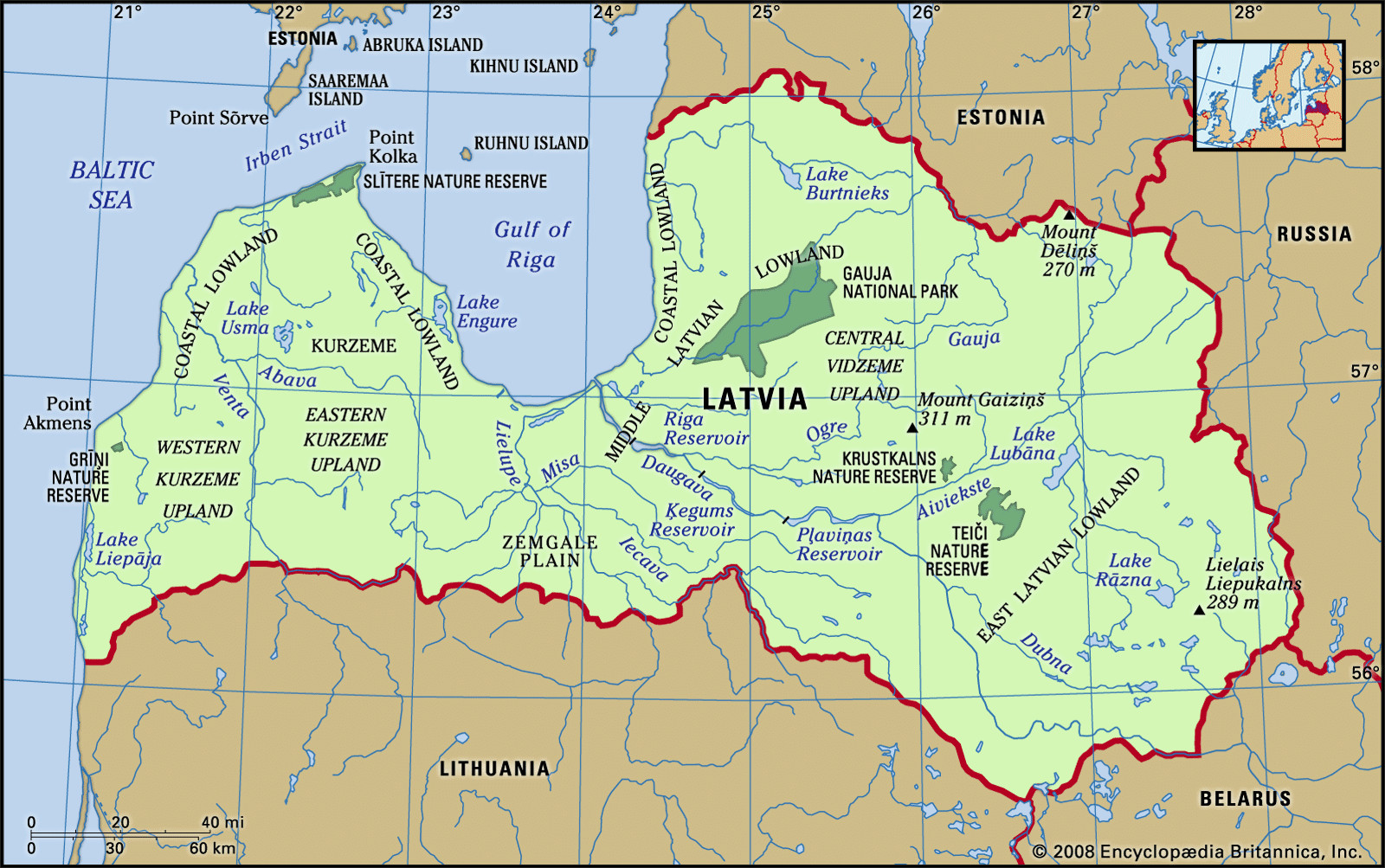Latvia, a country often mentioned in discussions about Eastern Europe and the Baltic states, prompts a fundamental geographical question: Where In Europe Is Latvia? Nestled in Northern Europe, Latvia boasts a strategic location on the eastern shore of the Baltic Sea, bordering the Gulf of Riga. To paint a clearer picture, Latvia shares its northern border with Estonia, its eastern frontier with Russia, the southeast with Belarus, and its southern edge with Lithuania. This positioning places Latvia firmly within the Baltic region, a historically and culturally rich area of Europe.
Latvia’s geographical coordinates place it in a fascinating part of the European continent, bridging Western and Eastern influences throughout its history. Its access to the Baltic Sea has been crucial for trade and cultural exchange for centuries, shaping its identity and development.
Exploring Latvia’s Diverse Landscape
The Latvian terrain is characterized by a gently undulating plain, a tapestry of flat lowlands seamlessly transitioning into rolling hills. The eastern reaches of the country showcase a more pronounced elevation, dominated by the Central Vidzeme Upland. This elevated region culminates at Gaizinkalns, Latvia’s highest point, reaching 1,020 feet (311 meters). In the southeastern part of Latvia, within the Rāzna National Park, Lielais Liepukalns stands as another notable peak at 947 feet (289 meters). Venturing westward, the Kurzeme Upland, or Courland Peninsula, is bisected by the Venta River, creating distinct western and eastern sections. Between the Central Vidzeme and Latgale uplands, the East Latvian Lowland unfolds, marked by moraine ridges that naturally hinder water drainage, contributing to the prevalence of peat bogs in this area.
Latvia is generously endowed with rivers that carve through its landscape on their journey to the Baltic Sea. The Daugava River, known internationally as the Western Dvina, reigns as the longest within Latvia, stretching 222 miles (357 km). Other significant rivers include the Gauja, Venta, and Lielupe, each contributing to the intricate drainage system of the nation. Interspersed among the hills and forests are numerous lakes, some quite substantial, reaching up to 12 square miles (30 square km) in area, adding to the scenic beauty and ecological diversity of Latvia. The soils of Latvia are mainly podzolic, except for the Semigallia Plain (Zemgale), east of the Kurzeme Uplands, which features calcareous soils. Swampy soils are more common in areas like the East Latvian Lowland. However, soil erosion presents a challenge in the more actively farmed hilly regions.
Latvia’s Climate: A Blend of Baltic Influences
Latvia’s climate is significantly shaped by southwesterly winds originating from the Atlantic Ocean. This maritime influence results in high humidity and predominantly cloudy skies, with sunshine gracing the country for only about 30 to 40 days annually. Average rainfall generally exceeds 20 inches (500 mm) in the lowlands and can reach or surpass 30 inches (760 mm) in the uplands. The frost-free period extends for approximately 125 to 155 days, defining the growing season. Summers in Latvia are typically mild and often rainy, with average June temperatures around the mid-60s Fahrenheit (17°C), occasionally spiking into the mid-90s Fahrenheit (34°C). Winter arrives gradually, lasting from mid-December to mid-March. Average January temperatures range from the upper 20s Fahrenheit (near -2°C) on the coast to the lower 20s Fahrenheit (about -7°C) inland, with rare but significant cold snaps dropping temperatures to -40s Fahrenheit (-40°C).
Rich Biodiversity: Latvia’s Flora and Fauna
Over half of Latvia’s land is a mosaic of forests, meadows, pastures, swamps, and undeveloped areas, highlighting the country’s commitment to green spaces. Forests alone cover more than a third of the total area, with about a tenth being cultivated forests. Extensive forest tracts are found in the northern Kurzeme Peninsula, along the Daugava River banks, and in the northeast, where coniferous trees like pine and spruce are dominant. Among deciduous trees, birch, aspen, and alder are the most widespread. Meadows are scattered throughout river valleys and hilly terrains, contributing to the diverse ecosystems.
Latvia’s wildlife includes squirrels, foxes, hares, lynx, and badgers. Ermines and weasels are less frequently seen. Conservation efforts have successfully boosted populations of deer and elk, and beavers have been reintroduced, playing a vital role in wetland ecosystems. The avian population is rich and varied, featuring nightingales, orioles, blackbirds, woodpeckers, owls, grouse, partridges, finches, tomtits, quail, and larks. Storks and herons are commonly sighted in marshes and meadows, emblematic of Latvia’s wetland habitats.
In Conclusion
Latvia’s location in Europe, specifically in the Baltic region of Northern Europe, defines its geography, climate, and biodiversity. Bordered by the Baltic Sea and neighboring countries, Latvia offers a unique blend of coastal plains, rolling uplands, and rich natural environments, making it a geographically significant and ecologically diverse nation in Europe.

